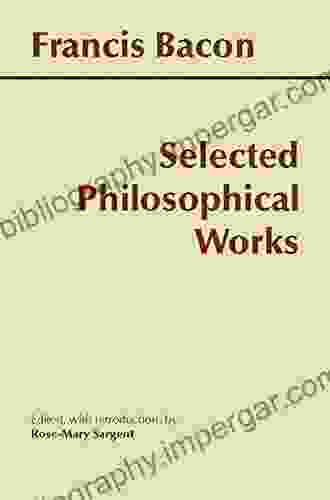Virtual Inertia Synthesis and Control: Powering the Future of Energy

In the rapidly evolving landscape of power systems, the growing integration of renewable energy sources has brought about a paradigm shift. While renewables offer significant environmental benefits, they also pose challenges to grid stability due to their intermittent nature. To address this issue, the concept of virtual inertia has emerged as a groundbreaking solution.
5 out of 5
| Language | : | English |
| File size | : | 54419 KB |
| Text-to-Speech | : | Enabled |
| Screen Reader | : | Supported |
| Enhanced typesetting | : | Enabled |
| Print length | : | 456 pages |
| Hardcover | : | 532 pages |
| Item Weight | : | 2.4 pounds |
| Dimensions | : | 7.2 x 1.4 x 10.1 inches |
What is Virtual Inertia?
Virtual inertia is a technique that emulates the inertial response of traditional power plants, such as coal and nuclear, in electrical grids. Inertia refers to the resistance of an object to changes in motion. In power systems, inertia helps maintain grid frequency stability by absorbing or providing energy during periods of imbalance between generation and demand.
Traditional power plants have inherent inertia due to the rotating mass of their generators. However, renewable energy sources, such as solar and wind, lack this natural inertial response. Virtual inertia synthesis involves using advanced control systems and power electronics to mimic the inertial behavior of conventional generators, thereby enhancing grid stability.
Virtual Inertia Synthesis and Control Techniques
Virtual inertia synthesis and control encompass a range of techniques that leverage power electronics, control algorithms, and communication systems. Key approaches include:
- Flywheel Energy Storage Systems: Flywheels store kinetic energy in a rotating mass and can be used to provide fast-acting inertial response.
- Supercapacitors: Supercapacitors are electrochemical storage devices that can release and absorb energy rapidly, enabling them to emulate inertial behavior.
- Grid-Forming Converters: Grid-forming converters are power electronic devices that can control the voltage and frequency of the grid, providing virtual inertia through grid emulation.
- Synthetic Inertia Control Algorithms: Sophisticated control algorithms can be implemented to extract virtual inertia from distributed energy resources, such as solar and wind farms.
Benefits of Virtual Inertia Synthesis and Control
Integrating virtual inertia into power systems offers numerous advantages:
- Enhanced Grid Stability: Virtual inertia provides grid operators with greater control over frequency fluctuations, reducing the risk of blackouts and improving overall system resilience.
- Increased Renewable Energy Integration: By addressing the lack of inertia in renewable energy systems, virtual inertia facilitates higher penetration of renewables, enabling a cleaner and more sustainable energy mix.
- Improved Load Balancing: Virtual inertia systems can help balance the load on the grid, preventing overloads and maintaining a stable voltage profile.
- Reduced System Costs: By replacing the need for expensive and polluting conventional generators, virtual inertia can lead to significant cost savings for utilities and consumers.
Challenges and Future Prospects
Despite its potential, virtual inertia synthesis and control face some challenges:
- Cost and Deployment: Implementing virtual inertia systems can be costly, and the widespread adoption of the technology may require financial incentives and policy support.
- Communication Infrastructure: Effective control of virtual inertia systems requires fast and reliable communication networks, which may need to be upgraded or expanded.
- Integration with Existing Grids: Integrating virtual inertia systems into existing power grids can be complex, requiring careful planning and coordination.
Addressing these challenges is crucial for unlocking the full potential of virtual inertia synthesis and control. Ongoing research, technological advancements, and policy initiatives are focused on overcoming these hurdles and accelerating the widespread adoption of this transformative technology.
Virtual inertia synthesis and control hold immense promise for revolutionizing power systems. By emulating the inertial response of traditional generators, this innovative technology enhances grid stability, enables greater renewable energy integration, and paves the way for a more sustainable and resilient energy future. As the technology matures and challenges are addressed, virtual inertia is poised to become an indispensable tool for the modernization and optimization of power grids worldwide.
5 out of 5
| Language | : | English |
| File size | : | 54419 KB |
| Text-to-Speech | : | Enabled |
| Screen Reader | : | Supported |
| Enhanced typesetting | : | Enabled |
| Print length | : | 456 pages |
| Hardcover | : | 532 pages |
| Item Weight | : | 2.4 pounds |
| Dimensions | : | 7.2 x 1.4 x 10.1 inches |
Do you want to contribute by writing guest posts on this blog?
Please contact us and send us a resume of previous articles that you have written.
 Book
Book Novel
Novel Page
Page Chapter
Chapter Text
Text Story
Story Genre
Genre Reader
Reader Library
Library Paperback
Paperback E-book
E-book Magazine
Magazine Newspaper
Newspaper Paragraph
Paragraph Sentence
Sentence Bookmark
Bookmark Shelf
Shelf Glossary
Glossary Bibliography
Bibliography Foreword
Foreword Preface
Preface Synopsis
Synopsis Annotation
Annotation Footnote
Footnote Manuscript
Manuscript Scroll
Scroll Codex
Codex Tome
Tome Bestseller
Bestseller Classics
Classics Library card
Library card Narrative
Narrative Biography
Biography Autobiography
Autobiography Memoir
Memoir Reference
Reference Encyclopedia
Encyclopedia Felix Nash
Felix Nash Lisa Steele
Lisa Steele Rod Barton
Rod Barton Jerry D Moore
Jerry D Moore Glen P Aylward
Glen P Aylward Rush Rhees
Rush Rhees G F White
G F White Frank V Webster
Frank V Webster Fred M Phillips
Fred M Phillips Fionnuala Halligan
Fionnuala Halligan Frank Ledwidge
Frank Ledwidge Seema Khan
Seema Khan Felicity Barnes
Felicity Barnes Florian J Egloff
Florian J Egloff Fiona Ballard
Fiona Ballard David Thorpe
David Thorpe L Robert Kohls
L Robert Kohls Ray Wohlfarth
Ray Wohlfarth Morris Panych
Morris Panych Gwilym Roberts
Gwilym Roberts
Light bulbAdvertise smarter! Our strategic ad space ensures maximum exposure. Reserve your spot today!

 Roberto BolañoUncover the Miraculous Power of the Miraculous Medal: A Journey with Simon...
Roberto BolañoUncover the Miraculous Power of the Miraculous Medal: A Journey with Simon... Emmett MitchellFollow ·9.1k
Emmett MitchellFollow ·9.1k Ruben CoxFollow ·7.7k
Ruben CoxFollow ·7.7k Carter HayesFollow ·12.3k
Carter HayesFollow ·12.3k Jacob FosterFollow ·5.1k
Jacob FosterFollow ·5.1k Kevin TurnerFollow ·14.8k
Kevin TurnerFollow ·14.8k Hugh ReedFollow ·12.8k
Hugh ReedFollow ·12.8k Darius CoxFollow ·13.4k
Darius CoxFollow ·13.4k Brent FosterFollow ·3.2k
Brent FosterFollow ·3.2k

 Alexander Blair
Alexander BlairBecoming Sports Agent Masters At Work: The Ultimate Guide
What is a Sports...

 Xavier Bell
Xavier BellUnveiling the Enchanting World of Upper Bohemia: A Review...
A Captivating...

 Chris Coleman
Chris ColemanUnveiling the Secrets: Extreme Rapid Weight Loss Hypnosis...
In the relentless pursuit of a slimmer,...
5 out of 5
| Language | : | English |
| File size | : | 54419 KB |
| Text-to-Speech | : | Enabled |
| Screen Reader | : | Supported |
| Enhanced typesetting | : | Enabled |
| Print length | : | 456 pages |
| Hardcover | : | 532 pages |
| Item Weight | : | 2.4 pounds |
| Dimensions | : | 7.2 x 1.4 x 10.1 inches |
















